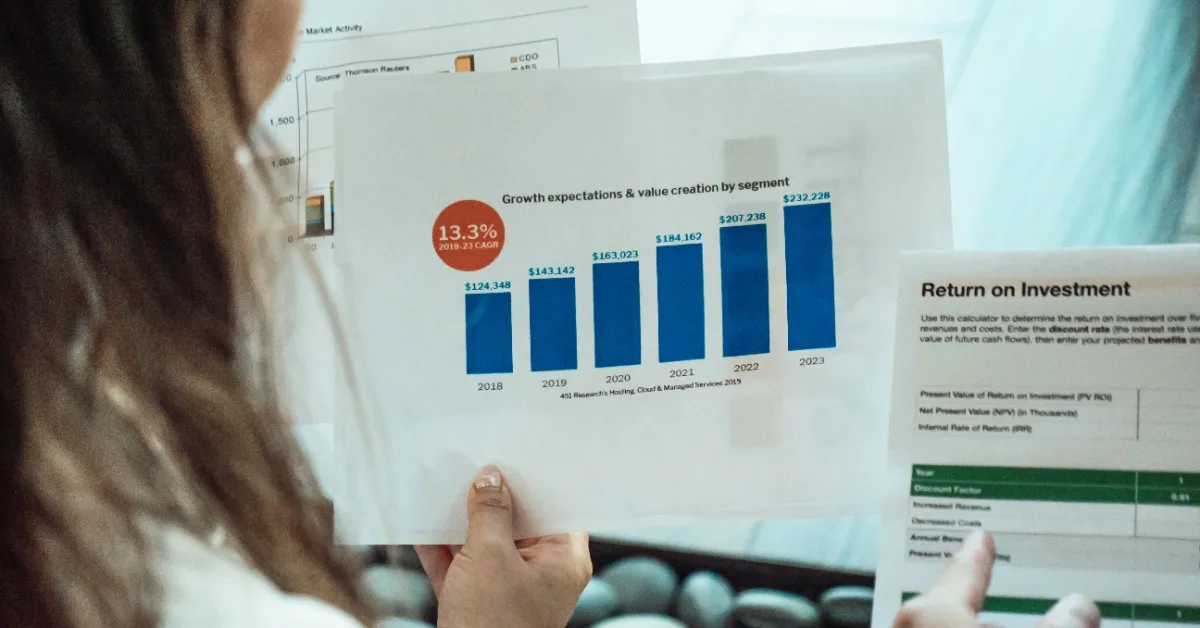
As a business owner, you’re always looking for ways to increase revenue while minimizing costs. One of the most effective ways to do this is by maximizing your marketing ROI. In this article, we’ll explore how you can measure the effectiveness of your marketing efforts using various metrics.
Understanding ROI
ROI stands for Return on Investment, a metric used to evaluate the profitability of an investment. In the context of marketing, ROI measures the revenue generated from a specific marketing campaign compared to the cost of the campaign. A positive ROI indicates that the campaign generated more revenue than it cost, while a negative ROI indicates that the campaign was not profitable.
To measure the ROI of your marketing campaigns, you’ll need to track the cost of the campaign as well as the revenue generated from the campaign. This can be done by using various metrics such as customer acquisition cost, customer lifetime value, and conversion rates.
Customer Acquisition Cost (CAC)
CAC measures the amount of money it costs to acquire a new customer. This metric includes the cost of all marketing and sales efforts, such as advertising, promotions, and sales commissions, divided by the number of new customers acquired during the campaign.
Customer Lifetime Value (CLV)
CLV measures the total amount of revenue generated by a customer over their lifetime of doing business with you. This metric takes into account the average purchase value, purchase frequency, and customer retention rate.
Conversion Rates
Conversion rates measure the percentage of people who took a desired action, such as making a purchase or filling out a contact form, compared to the number of people who visited your website or saw your ad. A high conversion rate indicates that your marketing campaign effectively got people to take action.
Maximizing ROI
Once you clearly understand your marketing ROI, you can take steps to maximize it. One way to do this is by investing more in campaigns with a high ROI and less in campaigns with a low ROI. You can also optimize your campaigns by testing different ad copy, images, and landing pages to see what works best.
Measuring your marketing ROI is only the first step in maximizing profitability. Once you’ve calculated your ROI, it’s time to take action and implement strategies that will help you get the most out of your marketing campaigns.
Invest More in High ROI Campaigns
One straightforward strategy for maximizing your ROI is to invest more in campaigns with a high ROI and less in campaigns with a low ROI. By doing so, you can allocate your marketing budget more effectively and generate more revenue with fewer resources.
For instance, let’s say you run two different ad campaigns. Campaign A has a total cost of $10,000 and generates $20,000 in revenue, resulting in an ROI of 100%. Campaign B, on the other hand, has a total cost of $10,000 but only generates $12,000 in revenue, resulting in an ROI of 20%.
In this scenario, it’s clear that Campaign A is more effective than Campaign B. By investing more in Campaign A and less in Campaign B, you can generate more revenue with the same amount of money.
Optimize Your Campaigns
Another strategy for maximizing your ROI is to optimize your campaigns. This involves testing different ad copy, images, and landing pages to see what works best and generates the highest ROI.
For example, let’s say you’re running a Facebook ad campaign to promote a new product. You create two different ad variations: one with a product image and one with a lifestyle image. After running both ads for a week, you find that the ad with the lifestyle image generated a higher ROI than the ad with the product image.
By optimizing your ad campaigns and focusing on the elements that generate the highest ROI, you can make the most of your marketing budget and generate more revenue.
Analyze Your Audience
Understanding your target audience is key to maximizing your marketing ROI. By analyzing your audience, you can tailor your campaigns to their specific needs and preferences, resulting in higher conversion rates and a higher ROI.
For example, let’s say you run a small business that sells skincare products. After analyzing your customer data, you find that the majority of your customers are women between the ages of 25-35 who are interested in natural and organic skincare products.
Armed with this information, you can tailor your marketing campaigns to this specific audience. You might create ads that highlight the natural and organic ingredients in your products, or use social media influencers who appeal to women in this age group.
By focusing on your target audience and tailoring your campaigns to their specific needs, you can generate a higher ROI and increase your revenue.
Real-World Examples
To illustrate these strategies in action, let’s look at a few real-world examples of companies that have done the right things to maximize their marketing ROI.
- Dropbox
Dropbox is a cloud-based storage company that uses a freemium model to attract new customers. The company offers a free version of its service with limited storage space but charges a fee for additional storage.
To maximize its marketing ROI, Dropbox invested heavily in referral marketing. They offered existing customers additional storage space if they referred new customers to the platform.
This strategy paid off in a big way. Dropbox saw a 60% increase in sign-ups and a 3900% increase in daily traffic as a result of its referral program. By investing in a high ROI strategy like referral marketing, Dropbox was able to generate more revenue with fewer resources.
- Dollar Shave Club
Dollar Shave Club is a subscription-based razor company that disrupted the shaving industry with its innovative business model and clever marketing campaigns.
To maximize its marketing ROI, Dollar Shave Club invested in humorous, viral marketing campaigns that resonated with its target audience. Their famous “Our Blades Are F***ing Great” ad went viral and put the company on the map, resulting in millions of views and thousands of new subscribers.
But Dollar Shave Club didn’t stop there. They continued to invest in humorous and relatable marketing campaigns that resonated with their audience, such as their “One Wipe Charlies” ad campaign that promoted their flushable wipes.
By investing in creative and relatable marketing campaigns, Dollar Shave Club was able to generate a high ROI and grow its business rapidly.
- BarkBox
BarkBox is a subscription-based service that delivers monthly boxes of toys and treats to dog owners. To maximize their marketing ROI, BarkBox invested in influencer marketing campaigns that targeted their specific audience: dog owners who love spoiling their furry friends.
They partnered with social media influencers who had large followings of dog owners and created engaging content that showcased their products. These campaigns were highly effective, resulting in a 400% increase in revenue and a 300% increase in social media followers.
By analyzing its target audience and investing in influencer marketing campaigns that resonated with them, BarkBox was able to generate a high ROI and grow its business rapidly.
Conclusion
In conclusion, maximizing your marketing ROI requires a combination of strategic planning, creative execution, and effective measurement. By investing in campaigns that resonate with your target audience, optimizing your website and ad campaigns for conversions, and tracking key metrics such as conversion rate, customer lifetime value, and cost per acquisition, you can generate a higher ROI and grow your business rapidly.
To further improve your skills and knowledge in this area, there are various free courses and online resources available that can help you develop your marketing skills and stay up-to-date with the latest trends and strategies. For example, Hubspot offers a range of free online courses on topics such as inbound marketing, SEO, and social media marketing. Google Analytics also provides free courses and certification programs on web analytics, data analysis, and reporting.
Other valuable resources include industry blogs such as Moz, MarketingProfs, and Social Media Examiner, as well as online communities such as Reddit’s r/marketing and LinkedIn groups like Digital Marketing: Social Media, Search, Mobile & More.
By investing time in these resources and continuing to learn and grow your marketing skills, you can take your ROI to the next level and achieve even greater success in your marketing campaigns.




